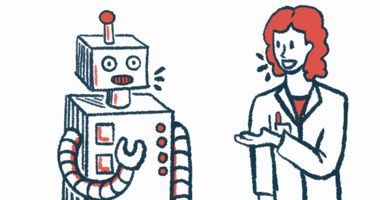Model identifies ALS subtypes to help design targeted treatment
Modeling could inform clinical trials, drug development

Researchers identified three forms, or biotypes, of amyotrophic lateral sclerosis (ALS), each with distinct mechanisms that could suggest pathways for biologically specific treatment.
A machine learning model was able to classify people with ALS into these three groups using demographic and disease-related information.
“The machine learning model we developed, or a similar approach, could be used to inform future clinical trials to address the issue of ALS patient [variability] and develop treatment modalities that specifically target the different biotypes of ALS,” the researchers wrote.
The study, “Machine learning predicts distinct biotypes of amyotrophic lateral sclerosis,” was published in the European Journal of Human Genetics.
ALS is caused by the progressive damage to motor neurons, the specialized nerve cells that control voluntary movement. People with ALS are less able to control movement as these motor neurons die.
Varied symptoms, mutations, risk factors complicate treatment development
ALS symptoms and pathophysiology (disease-related functional and molecular changes in the body), can vary among people with ALS, making “developing impactful disease course-modifying therapies and reliable biomarkers challenging,” the researchers wrote.
Several different genetic mutations and risk factors may contribute to the disease, further complicating the picture.
“Identifying biotypes of ALS based on underlying pathophysiological mechanisms may be key to developing diagnostics and targeted therapies,” the researchers wrote. “Past attempts to classify ALS based on site of onset of motor symptoms, rate of progression, age of onset, and other demographic features have some prognostic value but have failed to elucidate distinct pathophysiological mechanisms.”
The trio of researchers in the U.K. and the U.S. set out to identify ALS biotypes based on their pathophysiological processes. They analyzed data from two gene activity databases derived from deceased ALS patients and healthy controls.
Scientists can use such information to infer which proteins are being produced and which molecular processes are active, allowing clustering of patients with similar pathophysiological processes.
The researchers used mathematical models to identify clusters of ALS participants based on gene activity data from brain samples, and then separately from spinal cord samples. Brain and spinal cord results yielded three biotypes, which were comparable in both areas. These three clusters were further supported by analyses that combined data from ALS patients and healthy controls.
One biotype was enriched in people with marked signs of problems in synapses, the junctions at which neurons communicate with each other. Synaptic dysfunction and loss can lead to the type of neuronal cell death seen in ALS.
“Therapeutic approaches targeting neuronal survival and synaptogenesis [the creation of new synapses] may be reasonable approaches for these patients,” the researchers suggested.
The second cluster, comprising nearly half of all ALS participants, showed molecular signals consistent with neuron regeneration, with pronounced activation of both neurons and glia, the support cells in the brain.
While degeneration is a key part of ALS progressions, the remaining neurons extend their nerve fibers to the targets of degenerating neurons. Given that interactions between neurons and glia are often important for this type of neuron growth, therapies for this group could focus on neuron-glia interactions and regenerative processes, the team suggested.
The final group showed less gene activity overall, consistent with neurodegeneration. “This likely represents end-stage disease at which point most therapeutic interventions are unlikely to alter the disease course,” the researchers wrote.
Ethnicity, disease duration ‘most important factors’ for grouping
Because it may be challenging to get gene activity data from the brains or spinal cords of living ALS patients, the team explored other predictive factors via machine learning, a form of artificial intelligence that uses algorithms to analyze data, learn from its analyses, and make predictions.
By feeding machine learning algorithms information about participants’ ethnicity, age at symptom onset, disease duration, and other factors, they successfully recapitulated the three groupings. About 79% of the time, these models accurately predicted an individual’s group.
“The most important factors for our model overall involved ethnicity and disease duration characteristics: both previously implicated in ALS,” the team wrote.
There were some specific gene activity differences in key biological pathways among patient groups and between patient clusters and healthy controls. The team also found increased activity of certain genes coding for human endogenous retrovirus K, a group of viruses that became incorporated into human DNA and have been linked to ALS, in specific ALS clusters.
Targeting pathways and dysregulation specific to each biotype could provide other therapeutic approaches.
With snapshots from each participant at only one time point — the time of the person’s death — researchers couldn’t ascertain if biotypes were consistent over time or if they represented more of a continuum.
“The different pathophysiological subgroups may be relevant at different times during the disease course,” they wrote. “Models that take this into account may be able to optimize the timing of therapeutic interventions.”
Future work could use these ALS biotypes and machine learning models to identify individuals’ biotypes and infer potential targets for intervention, the researchers said.








